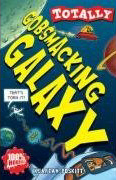
 The Murderous Maths LIVE SKY MAP!
The Murderous Maths LIVE SKY MAP!
Which planets can you see tonight?
As you may know, the stars are so far away from us that the patterns they make in the sky stay the same. However a few of the bright specs we see from earth seem to move around. In ancient times these wandering stars were known as the planets which meant "the wanderers".
These days we've found out that they are the other worlds that share our solar system and go round our sun. The nearest star is about 4,000 times further away than the distant dwarf planet Pluto.
When a planet is on the other side of the sun from us we can't see it, but at other times it can appear.

|
The Gobsmacking Galaxy
What can you see in the sky?
What are the other planets really like?
How do you travel in space?
How could your children become older than you?
Where do stars come from?
What are red giants and black holes...
...the answers are all in here!
Available in over 25 languages!
|
How to use the sky map
-
Set the time and date you want to look at the sky.
- Set where you are on the earth. You can use latitude and longitude co-ordinates if you know them. (Whole numbers only please - or the programme gets confused!) Otherwise there's a drop down list of major cities, so pick the nearest one to you.
- The planets in the sky will appear along with the moon!
Note: the map has SOUTH to the left and NORTH to the right.

MAGNITUDE
The number after the planet is its apparent magnitude, which is a measure of how bright it is.
It's a complicated logarithmic scale, but the main thing to know is that a lower number is brighter and so negative numbers are very bright! Here are a few magnitudes:
-26.73
-12.6
-4.7
-3.0
-2.8
-1.9
-1.47
-0.24
3
5.5
6.5
7.7
9.5
13.65
|
The SUN
The MOON
Venus *
Mars *
Jupiter *
Mercury *
Sirius, the brightest star
Saturn *
faintest things you can see in a normal sky over a town
Uranus *
faintest things you can see in a perfect dark sky
Neptune *
faintest things you can see with binoculars
Pluto *
|
* These are the maximum brightnesses of each planet. Mars looks good here, but actually it's very rare for it to be brighter than Jupiter!
|
PLANET GUIDE:
MERCURY is nearest the sun. Although it is always in the sky during daylight hours, it can only be seen just before sun rise or just after sun set, and is quite hard to spot unless you know what you're looking for. (Do NOT stare at the sun!)
VENUS is the only other planet in between us and the sun. After the sun and the moon, it is the brightest object in the sky. It can appear very brightly either at dusk or dawn and the ancients used to think it was two different stars - the "evening star" or the "morning star".
Mercury and Venus are the inferior planets which means they orbit between us and the sun so we can never see them in the middle of the night. These two change their positions quite noticeably from one night to the next. All the other planets are superior, which means that they can be on the opposite side of Earth from the sun and so they can appear at midnight and look their best.
MARS takes nearly twice as long as we do to go around the sun, which means that we get the best views roughly once every two years. It's distinctly orange in colour.
JUPITER If you see a very bright object in the middle of the night, it can't be Venus, so it will usually be Jupiter. If you have good binoculars you might even be able to see up to four tiny bright dots next to it. These are Jupiter's four major moons!
SATURN looks like quite a bright star and with a decent telescope you might see the rings!
For thousands of years people regarded 7 as a magic number because of the seven wonders of the sky which were the sun and moon and the five planets they could see. But then in 1781 URANUS was discovered, then in 1846 they found NEPTUNE and in 1930 PLUTO. Sadly though, most of us are just like the ancient people and we'll never get to see the last three just using our eyes!
|
THANKS! We found this source code at
Light and Matter
who very kindly allow others to use it. We wouldn't have the foggiest idea how to make this programme ourselves!
|
 To the Murderous Maths Home page
To the Murderous Maths Home page
Find out how to measure star distances in The Fiendish Angletron
Have a laugh at ASTRONOMYHUMOR.COM

 The Murderous Maths LIVE SKY MAP!
The Murderous Maths LIVE SKY MAP!
 The Murderous Maths LIVE SKY MAP!
The Murderous Maths LIVE SKY MAP!

 To the Murderous Maths Home page
To the Murderous Maths Home page